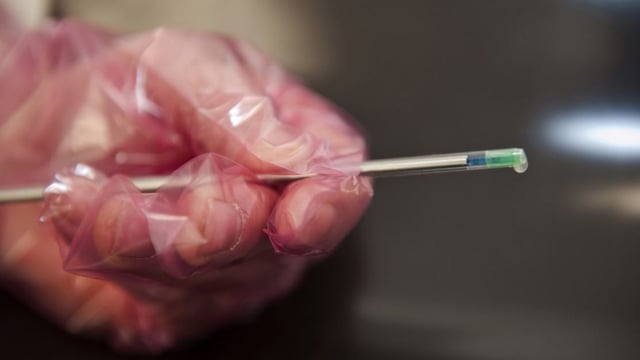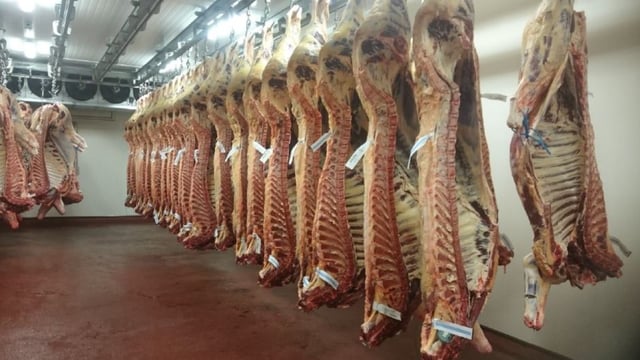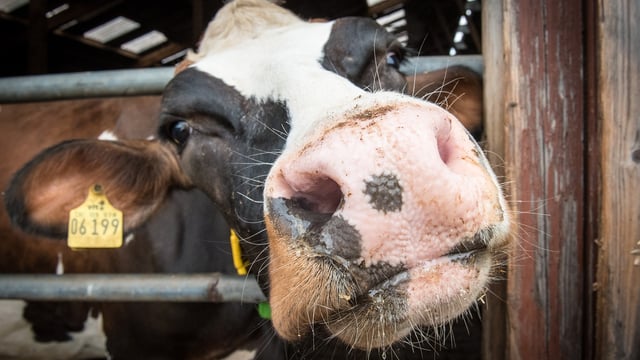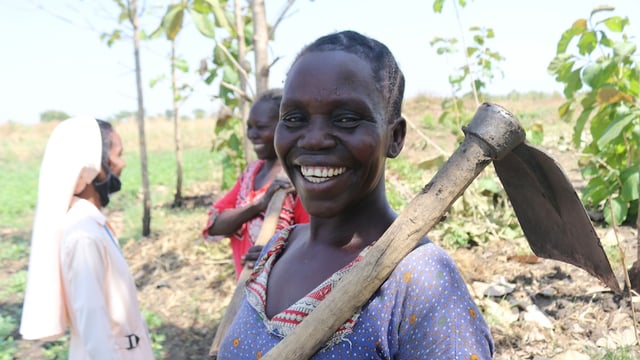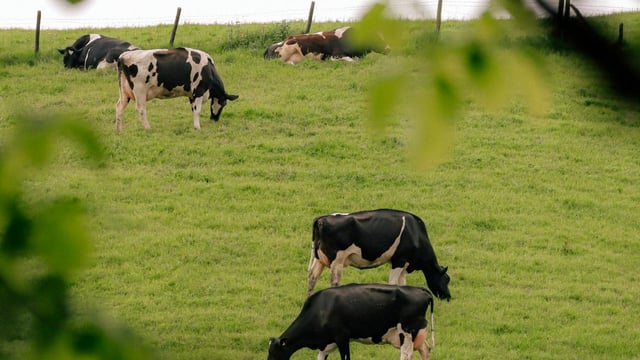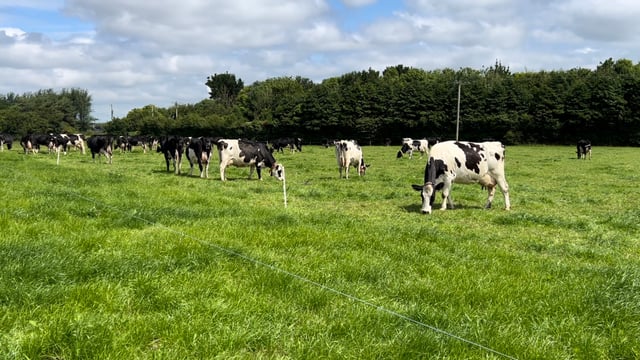2025 cattle exports surpass 100,000 head to date - up 18%
The total Irish live cattle exports to date this year have surpassed 100,000 head, according to the latest available figures from the Department of Agriculture, Food and the Marine (DAFM).
As of Sunday, March 23, DAFM figures show 104,000 cattle have been exported to date this year, which is up 18% or over 16,000 head from the the 87,900 cattle that were exported in the same time period last year and up 3% on 2023 figures.
Of the 104,000 cattle exported to date this year, over 66,000 were calves, 14,500 were weanlings, almost 8,000 were store cattle and 15,500 were adult cattle.
The table below details cattle exports by type for the first 12 weeks of 2023, 2024 and 2025:

Calves are classified as all cattle under six-weeks-of-age, weanlings are all cattle from six-weeks-of-age to six-months-of-age, store cattle are all cattle from six-months-of-age to 24-months-of-age, and adult cattle are all cattle from 24-months-of-age upwards.
Looking specifically at calves, the largest export market destination to date this year has been Spain with over 26,000 Irish calves sold to customers in that country.
The table below details calf export numbers by market destination in the first 12 weeks of 2022, 2023 and 2024:
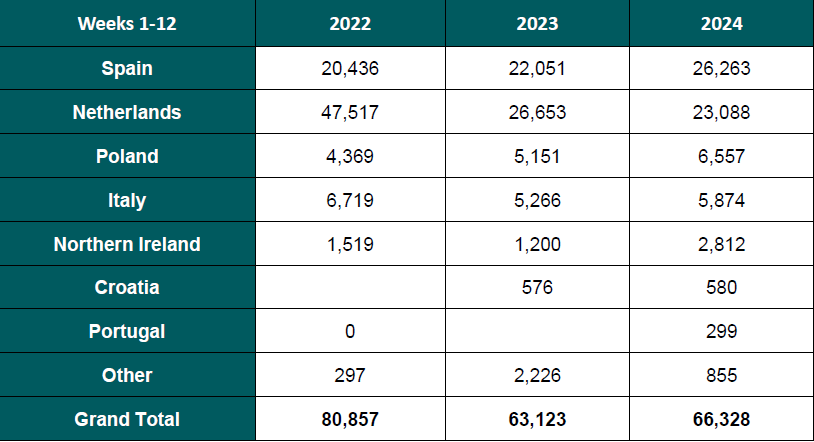
The number of calves going to The Netherlands has been declining, and the Dutch Veal Forward plan announced last year could see Irish calves phased out of the market completely.
Just over 23,000 calves have gone to The Netherlands to date this year, which while still a significant number is less than half 2023 levels.
According to Bord Bia, a growing proportion of Irish calves being sold to markets in other countries are beef crosses, which is in line with calf availability and the growing number of beef-sired calves from the dairy herd.
Looking at total cattle exports, Northern Ireland is the third-largest export market destination for Irish cattle, having purchased almost 15,500 Irish cattle in the first 12 weeks of this year - up 57% on last year.


